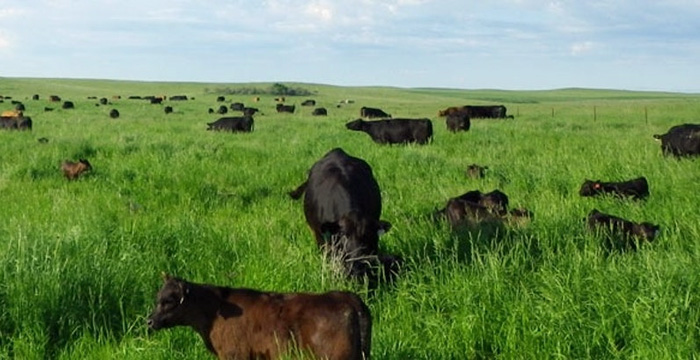Sustainable isn’t enough. Sustainable just maintains the current state of degraded soil. What’s needed is a regenerative agriculture … to restore the soil to the level of nutrients that existed prior to industrial farming. Then, we can practice sustainable agriculture.
This was part of the message, paraphrased, that about 135 farmers, ranchers and interested others heard from Gabe Brown and Ray Archuleta at a day long “Living Labs” workshop on January 29 at the Rosa Hall. The turnout was high, as it had been at two previous Brown-Archuleta workshops in rural Manitoba earlier that week. This was a testament to the hunger for a better way to grow food and revitalize rural economies, here and around the world. Regenerative International is gaining strength with over 250 partners and alliances across the globe.
Living Labs Initiative is a partnership between farmers and scientists to develop and test innovative agriculture practices and technologies in a real life context. The focus in on adapting to climate change, improving soils and maximizing biodiversity.
Brown and Archuleta are a dynamic team. Archuleta, a soil scientist, led off with some graphic demonstrations of the ability of soil samples to hold water/resist erosion, with the amount of tillage being the decisive factor in the soil structure and biology.
Brown, who partners with his wife and son on a 5000 acre farm/ranch near Bismark, ND, followed with an illustrated explanation of the 5 principles of the regenerative agriculture approach, based on his almost 30 years of experimentation and refinement. His hands on expertise is backed by plenty of hard science, and he has the numbers to prove that the once degraded fields on his ranch are steadily regaining health. The indicators are the amount and diversity of life below the soil surface producing a resilient, productive and profitable bottom line.
With a gentle poke at farmers whose idea of crop rotation is “canola / snow / canola” … and his father-in-law who practiced “recreational tilling” … Brown’s persuasive presentation, with a backdrop of photos of his operation as well as academic research results, gave life to the foundational ideas of this growing movement. This excerpt from his website, brownsranch.us, captures the basics.
“We believe in and practice Holistic Management, a part of which is farming and ranching in nature’s image. We strive to solve problems in a natural and sustainable way. Improving soil health is a priority and no-till farming has been practiced since 1993. A diverse cropping strategy, which includes cover and companion crops are used. We have now eliminated the use of synthetic fertilizers, fungicides, and pesticides. We use minimal herbicide and are striving to eliminate it. We do not use GMOs or glyphosate. Our ever evolving grazing strategy allows most of our pastures a recovery period of over 360 days. These strategies have allowed the health of the soil, the mineral and water cycles to greatly improve. In other words, the natural resources have benefited. This results in increased production, profit and a higher quality of life for us. We are moving towards sustainability for not only ours but future generations as well.”
While the things we heard and saw at this workshop sounded wise and true, we are not commercial farmers or ranchers. Our takeaway relates to our large garden and the efforts we are making to improve our soil. We rely on the produce we grow for a substantial part of our diet and are eager to learn how to produce our food in better ways. We will be experimenting with some of what we learned about cover and companion crops as we try to enhance our soil biology.
Since I recognized several of my “neighbours” at the workshop who do make their living raising crops and livestock, I wondered what brought them there – what they thought of the Regen Ag approach, and what their takeaways might have been. So, I conducted a small, informal survey. What I heard back from them was an appreciation for, and better understanding of, the principles involved … ideas that they have embraced and recognize as essential for the long term health of their farms’ soil. Some had bought Gabe Brown’s book, Dirt to Soil, to solidify their learning. All appreciated hearing about the academic monitoring and testing on Brown’s ranch which has resulted in hard data on a number of soil health indicators. These methods work.
Brown points out, and my neighbours reinforced, that the Regen Ag methods are not a “one size fits all” solution. Soil types vary, as do regional climates, and other factors, meaning that farmers need to figure out, with some trial and error, and expert advice, how to apply the principles on their farms. That reality is what’s driving Agriculture and Agri-Food Canada, through the Living Labs Initiative, to offer to partner with farmers who wish to make changes in their operations, or to continue in the regenerative directions they’ve already established.
Judging by the enthusiasm of the audience at this workshop, the seeds that Gabe and Ray are sowing will continue to grow and bear much fruit. The future of our soils, our farms and rural economies (and beyond) are what’s at stake, now and into the future.




